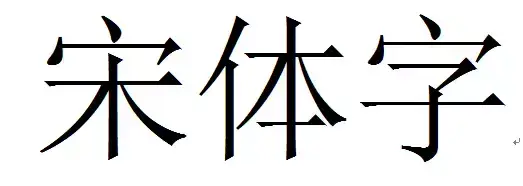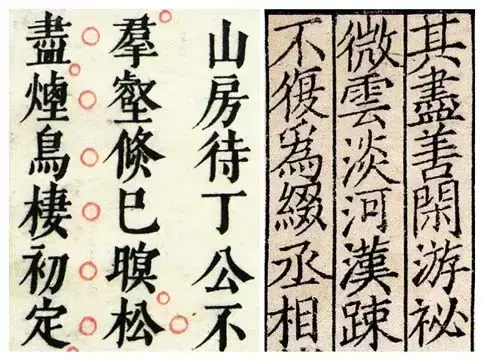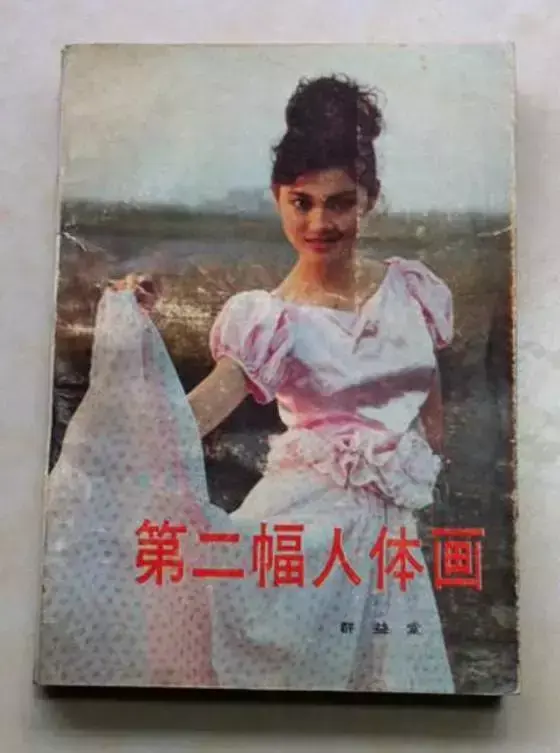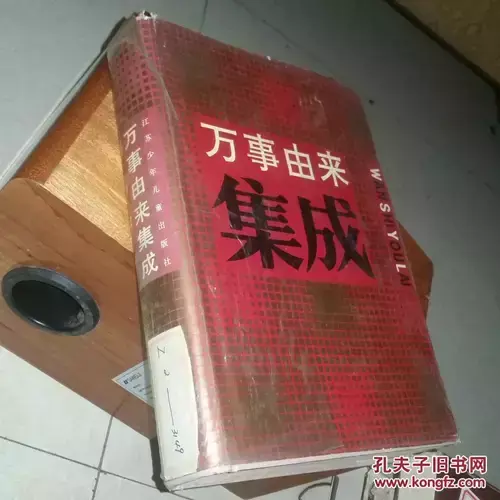Such an old rumor, I didn’t expect that some people still believe it.
Then I will refute the rumor again here.
1. Song style characters were not produced in the Song Dynasty, but in the Ming Dynasty.
2.Song typeface is not a writing font, but a printing font.
Everyone has seen Song fonts a lot, but they are all on computer screens and printed books. Have any of you seen any calligraphers writing in Song style in their works?
The characteristics of Song fonts are very obvious: horizontally flat and vertical, horizontally thin and vertically thick, rising and falling angular, square shape, and stiff strokes. .

Do you think this font can be written with a brush? Not to mention writing brushes, today's hard pens, can you write in this kind of font?
Obviously, there is only one way to produce such straight and stiff strokes, and that is with a carving knife.
Yes, the so-called Song style characters are the fonts that ancient printers used to draw on the wooden boards with a carving knife when carving the woodblocks. Precisely because it is carved with a knife, each stroke is extremely stiff, absolutely straight horizontally and vertically, and there is absolutely no need for curvature when it can go straight, so there are edges and corners from the beginning to the end of the pen. ——In short, all the characteristics of Song-style characters are inseparable from the tool "carving knife".
Precisely because Song font is the working font of ancient engravers, it does not pay attention to any integrity, so Song font looks dull and stiff, because it pursues efficiency and standards rather than art.
Since Song-style characters were produced in the Ming Dynasty, why is it called "Song-style"? That's because the Song Dynasty was an era when Chinese printing had just matured. When printing workers in the Song Dynasty were stereotyped, they did not have their own independent working fonts and still used handwriting. Since it is written in handwriting, of course it is necessary to use the copybooks of famous writers. Therefore, most of the books in the Song Dynasty use famous fonts such as Yan style, European style, and Liu style - this is one of the reasons why the Song style books are very beautiful.
In the Ming Dynasty, due to the beauty of the Song version of books, they often consciously imitated the Song version when printing. However, using famous fonts would inevitably lead to a reduction in work efficiency. Therefore, engravers in the Ming Dynasty pursued efficiency on the one hand and created fonts that were most suitable for printing. , on the other hand, they call this new font "Song Ti". ——In fact, it is completely different from the font used in the real Song version of the book.

This is the "Collected Poems of Meng Haoran" printed separately in the Song and Ming dynasties. The Ming version is on the left and the Song version is on the right. The difference between the two is clear at a glance. The Song version uses European style fonts, while the Ming version uses Song style.
Of course, it has nothing to do with Qin Hui.
Rumor source:
When did this rumor originate? Some students said it was four or five years ago, some said the 2000s, and some said the 1990s. In fact, it is not the case. This statement probably comes from a novel called "The Second Body Painting", which was published in 1988. The author himself is also a calligrapher.

original:
An artist's exquisite drawings do not necessarily reflect the artist's quality and conscience. Mao Yanshou had a wonderful writing style, and Qin Hui also wrote beautiful Song-style calligraphy. But their superb skills are exactly the opposite of their personalities.
In itself, "Qin Hui's beautiful calligraphy" is not outrageous, but to say "Song style calligraphy" is bad. Maybe the author mistakenly believed that Song-style characters originated from the Song Dynasty, and people in the Song Dynasty all wrote Song-style characters, so he said "Qin Hui is good at writing Song-style characters." This was naturally an unintentional mistake by the author, but the sales of this novel were not low.
I guess some of the readers realized based on this: "It turns out that Song style characters were invented by Qin Hui!" Hence the results we see today. The matter was brewing for two or three years. Finally, in 1991, a children's encyclopedia called "The Origin of Everything" was published, seriously compiling the secrets of "Song-style characters" - Song-style characters invented brackets for Qin Hui to be precise. The representative with complete brackets was originally called Qin Ti. Because people disliked Qin Hui's character, it was renamed Song Ti.
Of course, in this entry, Qin Hui also became the top pick. It is enough to see that this rumor took shape twenty-five years ago and influenced a generation.

At that time, this type of books was very popular among teenagers who were eager for knowledge, and they could not put down the books. My enlightenment was a book called "Youth Knowledge Handbook". (Note: There is no statement in the "Youth Knowledge Handbook" that Qin Hui invented Song Ti. I just used it as an example to illustrate the popularity of books)

Later magazines and many article authors also adopted the statement in "The Origin of Everything" and regarded "Qin Hui invented Song-style characters" as an argument that "character has nothing to do with talent."
Articles are uploaded by users and are for non-commercial browsing only. Posted by: Lomu, please indicate the source: https://www.daogebangong.com/en/articles/detail/ni-zhi-dao-ma-song-ti-zi-bu-shi-song-dai-chan-sheng-de-zi-ti-er-qie-ta-gen-ben-bu-shi-shu-xie-ti.html

 支付宝扫一扫
支付宝扫一扫 
评论列表(196条)
测试